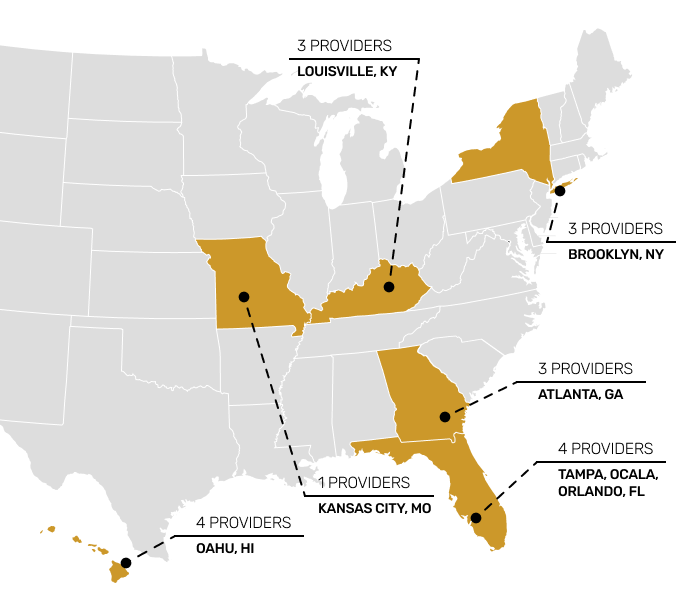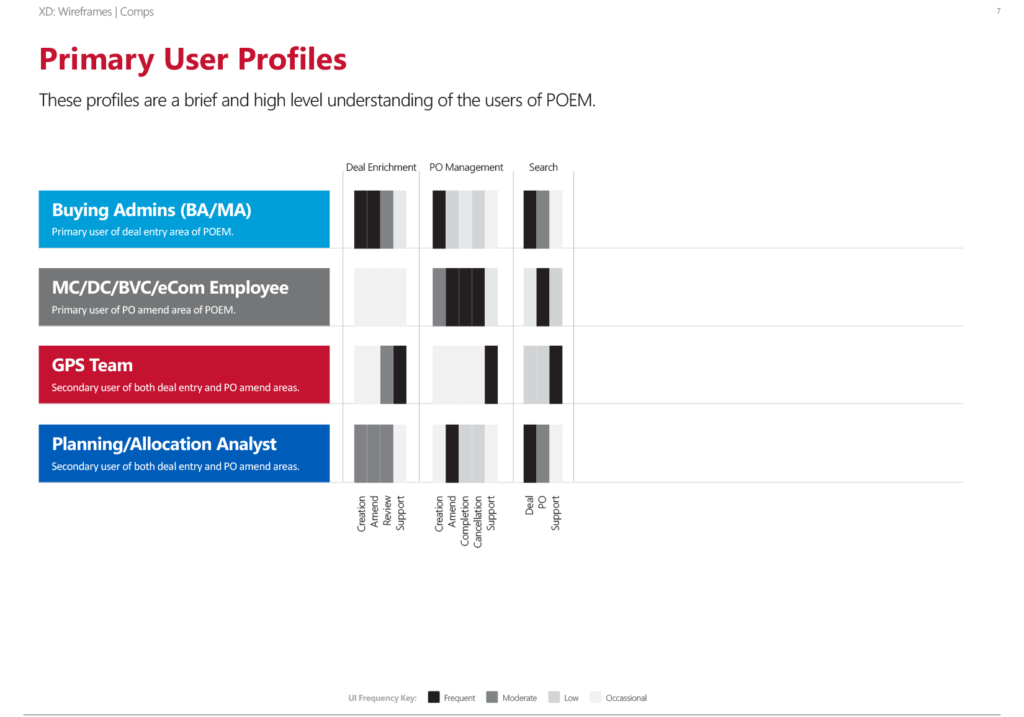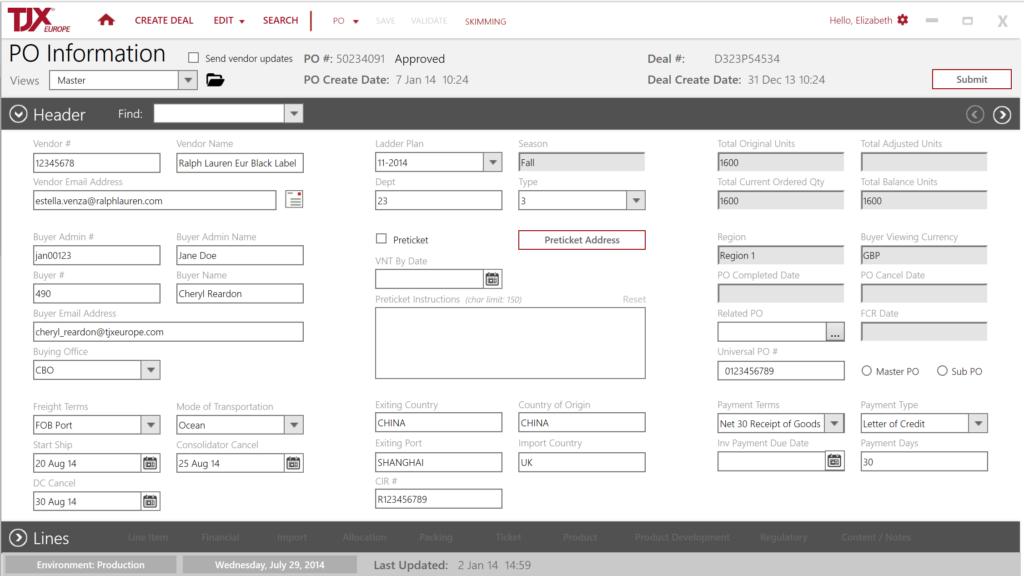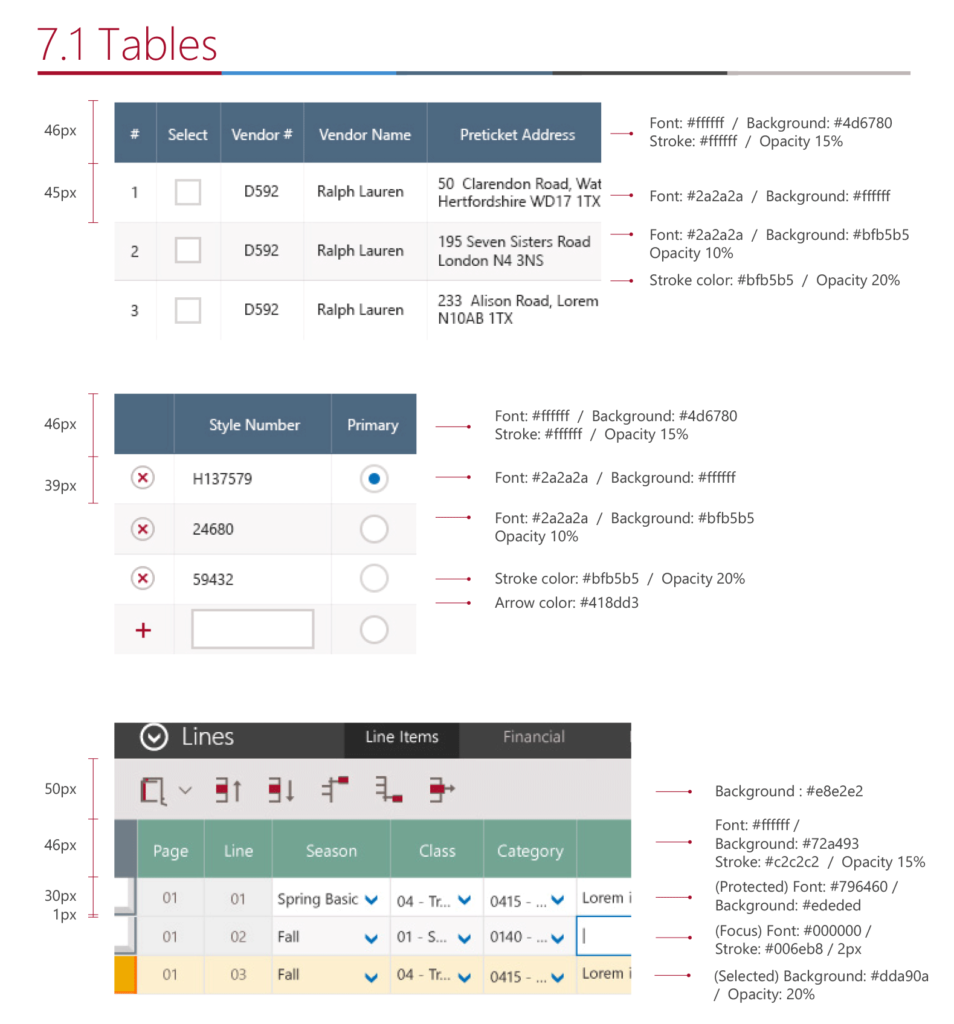How can strategic design unlock significant operational advantages for a global giant? My team and I tackled this challenge for a leading off-price retailer, leading a transformation of their core buying process. By embedding user-centricity and research into the heart of our approach, my team delivered intuitive applications that didn’t just improve workflows – they dramatically accelerated product availability and streamlined complex global operations at scale.

ROLE:
DESIGN LEAD
CHANNELS:
DESKTOP |
MOBILE APPLICATIONS
MY TEAM:
2 UX DESIGNERS |
3 VISUAL DESIGNERS
Reimagining Retail Buying for Global Scale
A global off-price retailer struggled to align its expanding European business with its successful U.S. operations. Inefficient processes, inaccurate demand forecasts, and disconnected buying tools across regions hurt profits, slowed inventory purchases, and made it harder to meet local and global market needs. These challenges highlighted the need for a digital overhaul of its buying operations.
Order Cycle Time was inconsistent with variability ~25%
A 25% variability in an off-price retailer’s order cycle time is generally poor, indicating significant inconsistencies. To measure a good Order Cycle Time Percentage (OCTP), the formula focuses on minimizing deviation from the target cycle time:
Good Order Cycle Time Percentage (OCTP) Formula (Target-Based):
OCTP = [1 – (Average Absolute Deviation of OCT / Target Order Cycle Time)] * 100
Where:
Target Order Cycle Time = The desired or promised order cycle time.
Average Absolute Deviation of OCT = Sum of (|Individual Order Cycle Time – Target Order Cycle Time|) / Total Number of Orders
If deliveries are all over the place (like a 25% difference in when they arrive), it’s bad for off-price stores. Customers won’t trust when their stuff gets there. It’s hard to know how much to order, so they might run out of things people want or have too much stuff sitting around costing money. It also means their way of getting things to the store probably has problems, which costs more in the long run. Plus, they have to keep extra stuff in stock just in case deliveries are late.
As the Design Lead, I was responsible for the strategic design direction and user-centered execution of the digital transformation. This involved leading a multi-disciplinary team to deliver two key applications: a desktop tool for buyer administrators to manage deal intricacies and a tablet application for buyers to negotiate and finalize purchases directly with vendors. A core objective was to drive measurable improvements in efficiency, accuracy, and time-to-market through evidence-based design.
The Unseen Hours: Building a Foundation of Global Understanding
business analyst across 3 time different zones
To grasp the intricacies of off-price retailer’s global buying operations, I engaged with their business analysts, investing overtime hours across time zones to meticulously understand the US and European processes. This immersive collaboration fostered a shared understanding that I cascaded throughout my team, leading to these key takeaways:
- Unified Global Perspective: Achieved a shared understanding of diverse regional needs and workflows.
- User-Centric Requirements: Captured accurate requirements reflecting the realities of buyer administrators in both regions.
- Cohesive Design Vision: Established a common vision for the functionality and user experience of the new applications.
The dedicated effort to understand and process the specific needs of their global users was crucial in tailoring the applications for their workflows. Directly leading to successful and impactful outcomes for their buying teams.
Turning User Pain Points into Positive Metrics
To build upon the user research, I led my team to focus on these key actions:
Evidence-Based Design & Iteration
We adopted a rigorous user-centered design approach. Through extensive user research, including interviews and workflow analysis with buyer administrators, we identified key pain points in their existing processes. This insight directly informed the design of the desktop application, focusing on an intuitive interface for capturing detailed product information. We then conducted iterative usability testing, directly observing users interacting with prototypes, which led to significant refinements in the design. This evidence-based approach was the catalyst for a 35% increase in the efficiency of attributes captured per order.
Data Precision Drives Speed and Savings
Improving Data Accuracy & Reducing Cost
The insights from user research also highlighted inconsistencies in data entry, leading to errors downstream. We implemented structured data entry fields and real-time validation within the desktop application, directly addressing these pain points. The result was a 20% reduction in data-related errors, which translated to a measurable decrease in the cost to serve by minimizing discrepancies in procurement and supply chain operations.
Accelerating Time-to-Market with Mobile
For on-site buyers, our research revealed the delays inherent in a disconnected negotiation process. The tablet application was designed to mirror their real-world interactions, enabling immediate capture of deal specifics. Usability testing with buyers validated the intuitive design, contributing to a 25% reduction in the average time-to-market for new products.

The Impact of UX: Stabilizing the Global Supply Chain
The successful launch of the buying applications for the global off-price apparel and home fashions retailer delivered significant and measurable impact:
“…designers usually sit downstream in the process to make visual improvements, but your team lived upstream and changed how we made global organizational improvements.”
Global Delivery Lead
(@ global off-price retailer)
With my team leadership and cross-functional collaboration, we co-directed with develop team a complex digital transformation by prioritizing user needs through evidence-based design. The tangible improvements in efficiency, accuracy, and time-to-market underscore the strategic value of a user-centered approach in a large, global retail enterprise.
CHECK OUT THESE OTHER CASE STUDIES, SCENARIOS, and stories

Training healthcare IT teams with people experiences in mind.

Educating marketers to better communicate energy efficiency to customers.

Changing the way headphone devices were configured for engineers.

Integrating iterative design into strategic drilling portfolio planning to maximize impact.



